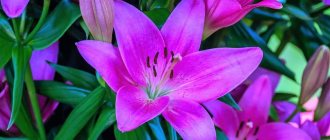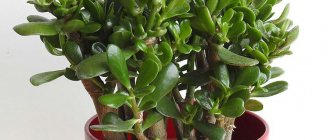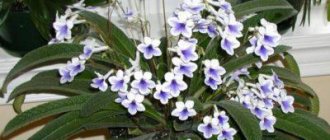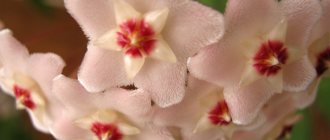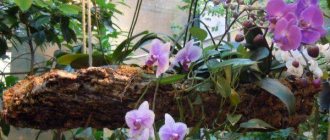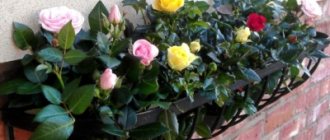The Orchidaceae family is the largest family of flowering plants, with up to 880 genera and over 26 thousand recognized species. Several hundred of them belong to unusual and rare species, many of which are on the verge of extinction.
These plants have an extravagant appearance and colors, some of them are ubiquitous in nature, others are endemic.
Among the rare orchids, the most beautiful are those with unique flower shapes. There are also varieties that are distinguished by the rare color of their petals.
Dazzling living beauty
Orchids captivate with their grace and extraordinary tenderness. They are gradually replacing luxurious roses and other flowering plants. What makes home orchids so popular? Aristocratism, graceful silhouette, bright fragrant bouquets.
There are approximately 750 species of this flower. Their names are difficult to remember, but it is easy to highlight the most unusual and best of the best.
The Phalaenopsis orchid was studied by the botanist Blumen back in the 19th century. Their distinctive feature is a long stem with 4 fleshy leaves, and the inflorescences look like butterflies with velvety wings. In good conditions it can bloom 3 times a year.
This species has many varieties.
- Phalaenopsis Schiller has multi-colored leaves with a top coating. It can be distinguished by the large number of colors that gather on one branch. Sometimes there were 174 colors. Blooms 2-3 times a year.
- Amabilis is distinguished by large inflorescences that “sit” on winding branches. Up to 20 flowers grow on them, the diameter of which can reach 11 cm. The snow-white, yellow or pink-purple petals smell wonderful, which attracts flower growers.
- Stewart's Phalaenopsis has snow-white buds with reddish spots. This plant blooms in spring and autumn.
- Phalaenopsis Luddeman blooms at any time of the year, but most luxuriantly from December to March, and spreads an indescribable magical aroma around itself. Snow-white flowers cannot be confused with pink or yellow flowers.
- Pink, has a small peduncle with 15-20 snow-white pink flowers. But the elongated iridescent sepals, endowed with three lobes, have a transitional range from red to purple.
- The Sandera variety is the rarest and most expensive of the Phalaenopsis. The name is given by the surname of the gardener - Sander. The plant stands out with large peduncles looking down. They contain up to 50 flowers in diameter, reaching from 5 to 7 cm. Look at the photo.
- Phalaenopsis equina will suit fans of dark lilac and pink-purple colors.
- The giant one is distinguished by massive leaves reaching a length of up to 90 cm. The color of the flowers is milky cream, yellow and greenish-yellow, with protruding dark brown streaks. Due to the large size of the peduncle, it is difficult to keep at home, but for a greenhouse it is just right.
Rook striped
Places of distribution: Mexico, USA, southern Canada. Found exclusively in pine and mixed coniferous forests. Nutrition comes from fungi through mycoheterophagy. The stem comes in red, purple, white and other shades. Height—15-50 cm. Decorated with a racemose inflorescence of yellowish or dark pink color. The petals have burgundy stripes. There are red or purple columns inside the flowers. An interesting feature is that the leaves do not contain chlorophyll. Flowering period: May, June.
Other varieties of orchids
Cattleya surprises with its beautiful transparent waxy bouquets. There are many varieties, as well as a varied palette of colors. It blooms for three months.
Cymbidium - takes root well at home.
Dendrobium can bloom at any time of the year. It is not afraid of even not very warm conditions; it can delight with flowering even at a temperature of 10 ° C.
No gardener will refuse to have in his collection this magnificent seedling in the form of a tree with unusual flowers covering the entire stem of the plant. Wild orchids grow on trees or rocks, which is why its name means “tree-dwelling.”
A popular species among gardeners is Dendrobium nobilis due to its low maintenance requirements. This is a rather large plant with fleshy stems, on which dense, oblong-shaped leaves are located in two rows.
On short peduncles, three flowers are formed, whitish-cream at the base and pinkish or lilac at the edges.
A very popular species among florists is Dendrobium phalaenopsis. It attracts with large flowers, with a diameter of 3 to 8 cm. Each peduncle can accommodate from 5 to 40 white or crimson flowers.
Cambria has durable flowers of varying sizes and configurations. To make the plant bloom profusely, place it on the windowsill.
Hockstetter
This variety of phalaenopsis was discovered by the German naturalist and founder of the chemical plant Karl Hostetter, after whom it was named. A rare and unusual specimen was noticed by him during his stay in the Austrian town of Metzingem. It blooms with beautiful snow-white buds that resemble butterflies. The plant is so rare that for almost two centuries few people have seen it. That is why the Hockstetter orchid has been little studied and there are almost no descriptions.
Mysterious orchids
Collectors are trying to get rare specimens for their collection, among which one can highlight a green space called “Rothschild’s Slipper.” This is one of the most expensive plants of this species. Its price soars to $5,000.
This rare specimen is difficult to grow, and it blooms only after 15 years. “Rothschild’s slipper” is a flower of incredible beauty, which is why it has such a high price.
The “Mouth of the Dragon” can be called a rarity. It grows in swamps and wetlands in the United States, North America and Canada.
The solar orchid is the rarest specimen in the world of flowers and pleases with its buds only in warm weather. It grows only on the island of Tasmania.
The Hawaiian swamp orchid is blessed with beautiful velvety petals and pale green leaves.
The bull orchid got its name because of its curled petals that resemble the horns of a bull. Its flowers can be white, green and purple.
The Three Birds Orchid is endangered. These rare flowers bloom in forests, clinging to the trunks of deciduous trees.
Precious orchids are mainly grown by collectors around the world. The appearance of their leaves is more attractive than the flowers.
Bull
Externally, the orchid looks like the head of a bull, which is where it got its unusual name. The petals are curled and resemble bull's horns. Its homeland is the Philippines, mangrove swamps. Also, the plant can be found in Indonesia. It is distinguished by its large size, dark green oval leaves. The petals are white-pink-purple in color. The flowering period occurs in spring.
Flowers that look like birds
The incredible resemblance to birds makes one simply freeze in front of the beauty of these plants.
Habenaria radiata in the form of a bird strikes with its resemblance to the elegant “white heron”.
And these graceful snow-white petals of the flower are so reminiscent of the spread wings of a truly magical bird!
The tall peristeria seems to have “sheltered” a tiny dove in its bud, thanks to which it emanates silence and peace.
Because of its unearthly beauty, this flower almost became an endangered species.
Territory of distribution of species in nature
Large-flowered orchids, such as Cattleyas, Phalaenopsis, Paphiopedilums, Cymbidiums, were brought to Europe from:
- Tropics;
- And subtropics;
- Many are from mountainous regions.
Most species are epiphytes, some are lithophytes; there are species and entire genera growing on the soil. Orchids have colonized all continents of the Earth, with the exception of Antarctica. The number of genera, species and hybrids is so large that they occupy a tenth of the planet’s flora.
Orchids feel best in the subtropics:
- Southeast and South Asia;
- Northern Australia;
- Brazil.
Here are the optimal temperatures (and their seasonal/daily differences), humidity, day length by season, and illumination. Second distribution zone:
- Line connecting South and Central America;
- And North Africa.
At times, 100 percent humidity and warmth are beneficial factors for orchids.
The third, most severe territory for the family is the steppes and plateaus of Eurasia. Small and medium-sized species grow here. There is even an orchid with one large flower.
Guests from Vietnam
Orchids from Vietnam have become very popular among gardeners due to the beauty of their buds and easy care. But special attention should be paid to planting. If you do everything correctly when planting bulbs, then this exotic plant will delight you with its beauty for a long time.
In Vietnam there are 2 types of seedlings: aerial and ground. Aerial ones grow into tree trunks, while terrestrial ones grow on trash soil.
When selecting Vietnamese plants, choose medium-sized bulbs. Under good conditions, buds will appear only after 4-6 years.
Do you like white flowers? This bouquet will delight you for many years.
A surprise from Vietnam - yellow beauties.
A black flower of rare beauty amazes with its originality and magical appearance.
Dracula ("Monkey Face")
The rare black flower grows only in the mountains of South America at an altitude of two and a half kilometers above sea level. Does not like sunlight, preferring humid climatic conditions and shady crowns of large trees. This is a low plant with green arrow-shaped leaves. The peduncle is single-flowered, straight or slightly drooping.
All attempts at domestication ended in failure. Even during transportation, the seedlings died. The flower is strict and majestic, exudes a pleasant aroma of oranges.
Unusual colors
In nature, orchids have different shades and colors. Many plants are painted in 2-3 colors at the same time. This occurs as a result of crossing.
Blue, black and cyan pigmentation in nature
Blue and black pigmentation of petals does not occur naturally. They are bred by scientists in laboratory conditions. Such a plant is able to maintain its color during just 1 flowering, which lasts 8-12 months. New flower stalks will have a different color.
Nepenthes Attenboroughii.
This unusual, interesting flower was discovered on the island of Aalavan by three scientists in 2000, who went on an expedition to find this miracle of the plant world. The first information about the flower was received from missionaries who visited the island earlier. Going to Mount Victoria, scientists discovered huge flowers, the inflorescences of which resembled voluminous jugs.
It turned out that these unusual flowers are real predators that feed on rodents. It still remains a mystery how these flowers were able to survive to this day. This phenomenon is being studied today at McPherson's laboratory. Do you think custom bouquets made from these flowers would be in high demand?
Cymbidium swordifolia
Cymbidium ensifolium is the honeyiest of all orchids and the most popular of the cymbidiums. This is a very graceful orchid of the sympodial type with poorly developed centimeter-long pseudobulbs, completely covered with leaf sheaths, and long roots. Narrow lanceolate leaves from 30 cm to 1 m in length seem stunningly straight and strict, not only due to their folded structure, but also to their very dark color.
Cymbidium ensifolium. 阿橋HQ
Vertical inflorescences are usually somewhat shorter than the leaves. They bear up to 9 flowers that last for several weeks. With a diameter of 3 to 5 cm, they flaunt beige-yellowish sepals and petals with longitudinal, reddish veins, and sometimes spots, and a greenish lip covered with patterns.
Features of cultivation
These varieties of orchids were bred by breeders and do not require any unique conditions for maintenance, however, some rules must still be followed:
temperature regime. Since they all come from the hot tropics, the optimal temperature is considered to be up to 30 degrees during the day and not lower than 18 degrees at night;
illumination Almost all large orchids love indirect bright sunlight (with the exception of the Dracula orchid). Therefore, in the summer, it is recommended to keep the flowerpot with the plant under indirect bright sunlight, and at night to use special fluorescent lamps;
watering and humidity level. Based on the natural habitat conditions of these varieties, we can conclude that the humidity in the room should be quite high, up to 80-90%. It is necessary to water the plant as the soil dries; this is best done by immersing the pot in a container of water;
reproduction. It is carried out in two ways - division and cuttings. In the first case, in early spring, the root system is carefully divided into several parts and planted in different flowerpots. For better growth, it is necessary to recreate greenhouse conditions. In the second case, they use a “baby” that the plant throws out from time to time;
substrate
It is very important to choose the correct soil proportions to provide the plant with sufficient air and access to moisture. To do this, it is better to use ready-made mixtures that are sold in flower shops.
Advice! In order to maintain a normal level of humidity, it is necessary to periodically moisten and ventilate the room where the orchid is located.
Varieties
The main task of an orchid, like any other flower on the planet, is to attract pollinators with its appearance. But in addition to the bright color and pleasant aroma, the orchid has flowers of a rather original shape.
On a note. Thus, unusual varieties of orchids began to appear, which received this name due to the fact that their flowers resemble various recognizable shapes.
What makes them unusual?
The unusualness of the varieties is that they are not just beautiful, but also mysterious, incomprehensible. If you watch them for a long time, you get the feeling that this is a living creature, rather than just a flower. It literally takes your breath away and it is simply impossible to take your eyes off the plant.
